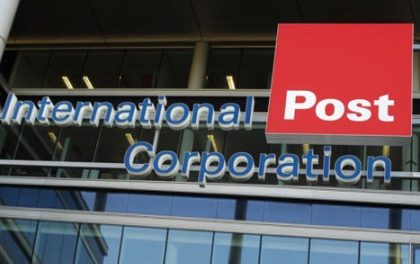
Express growth pushes terminal development
The volume of express air cargo is growing worldwide at nearly double the pace of regular air cargo, and Hong Kong sees this market as one that it can continue to dominate in the region long into the future, even as Guangzhou Baiyun Airport, with its dedicated cargo-handling facilities for China Southern Airlines, nears completion.
At present, express shipments represent about 7 per cent of throughput at Chek Lap Kok, but the Airport Authority expects the number to increase to 13 per cent by 2020.
The authority is rushing to market a dedicated express cargo terminal at Chek Lap Kok to compete with similar centres in Subic Bay and Clarke air base in the Philippines.
These house the Asian hubs of Federal Express (FedEx) and United Parcel Service (UPS), the number one and two players in the industry.
The authority is understood to be encouraging Cathay Pacific Airways and DHL Worldwide Express, which has been tipped to build and operate the new express facility, to jointly operate a mid-range freighter fleet for the intra-Asian trade routes to be based at the new facility.
DHL has been a long-term partner with Cathay, relying on the airline's passenger fleet to move express cargo to Osaka, Taipei, Seoul and Singapore at night. The new express facility at Chek Lap Kok will give the pair the option of enlarging their co-operation.
The authority launched the open public tender for the construction and operation of the new terminal 11 months ago.
All indications are that negotiations between the authority and DHL have been materially concluded and that the Deutsche Post-owned company will soon be officially awarded the contract to build and operate the facility.
The local industry believes the authority is targeting January 2004 as the official opening day of the new terminal.
By comparison, the development of SuperTerminal 1, the flagship cargo consolidation facility, Hongkong Air Cargo Terminals Ltd (Hactl) took several years of difficult negotiations to finalise.
The new express cargo facility is expected to at least match the annual throughput of the existing 500,000 square feet facility at SuperTerminal 1.
Glimpses of early architectural blueprints leaked to the Business Post show a dominant central cargo sorting area framed by several floors of offices and a central observatory tower from where freight movement will be monitored.
It will be built in a modular fashion to allow for a quick start-up, with future additions to be built as needed.
Hactl's express cargo facility, which at present services DHL, UPS and TNT, has a capacity for about 200,000 tonnes of annual throughput.
FedEx uses facilities at Chek Lap Kok owned by Singapore-based Asia Airfreight Terminal.
Based on growth projections, and with its present customer-base, Hactl will reach maximum capacity for express products by the middle of next year, the operators say.
The selection process for an operator to front the express terminal was not an easy one.
In December, the authority had extended invitations for proposals to all four of the leading global express operators operating in Hong Kong – UPS, FedEx, DHL and TNT – but only DHL showed sufficient interest to the authority's proposed business model to submit a bid.
The new terminal has also been a cause of friction between Hactl and AAT, both of which object to a new cargo-handling competitor at the airport.
It is also believed that the deal that has been shaped with DHL is a radical departure from the standard franchise agreements the authority has signed in the past with its other airport franchise operators.
Nevertheless, the facility's development highlights the emphasis on express air cargo and developing Hong Kong as an airfreight hub for the Pearl River Delta area for a high-value product.
The authority has also been lobbying the Hong Kong government to extend its scope of operation outside of Chek Lap Kok, with the aim of developing a logistics park on Lantau that would be a major source of freight for the facility.
The proposed DHL-Cathay fleet would also use the new terminal as a hub, connecting mainland and regional freight with Cathay's international long-haul network to DHL's European and United States hubs.












